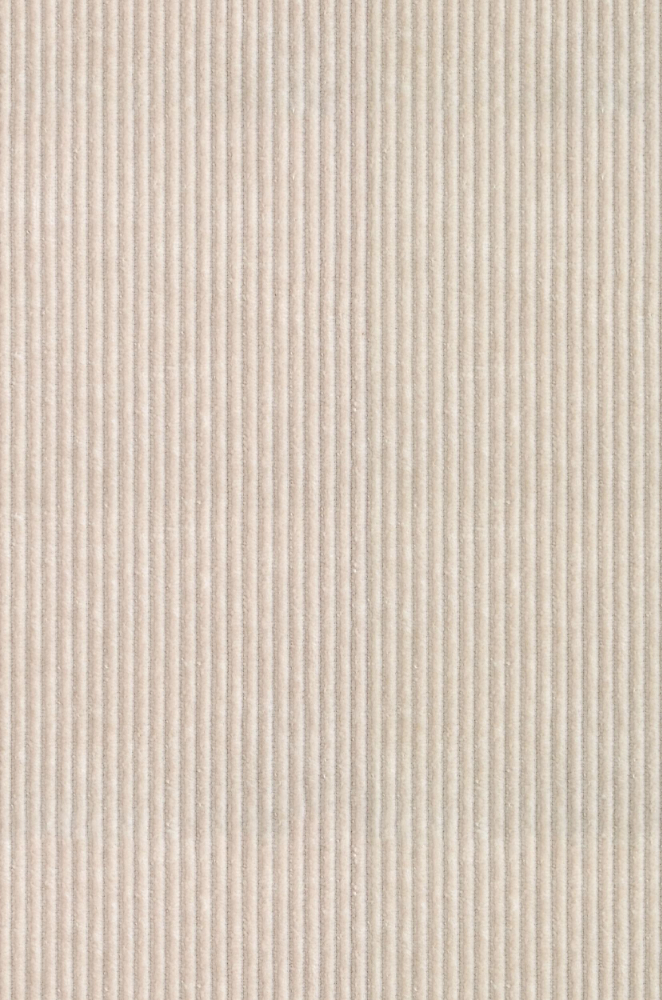Corduroy
Category
Fabric
Download
Edit
Corduroy is a popular clothing fabric with connotations of wealth and comfort, derived from cord ‘du roi’ which loosely translates from French as cord or cloth ‘of kings’, referring to its corded or fluted appearance and its origins as an exquisite material for premium menswear. The soft, luxurious feel is synonymous with the textile, a product of its fairly complex manufacture, while its connotations of luxury stem from its use by the land owning upper classes of British society during the 19th and 20th centuries. Before this, it was used as a durable fabric by members of the working class, as it was comfortable, warm and long lasting, owing to its tight, layered construction.
A tufted textile, corduroy is created by threading loops of cotton, wool or synthetic yarns through the base fabric in parallel cords, known as wales, resulting in ‘M’ or ‘W’ profile vertical waves or ribs on the exterior surface, where the tufts alternatively feed through the fabric to the facing layer, or disappear back into the fabric to create the gaps or troughs bare to the underlying fabric. While similar in feel and use to velvet and both derive from Fustian fabric, corduroy’s piles are the result of additional floats in the weft yarns, whereas velvet has thicker piles resulting from the loops in the warp yarn. The widths of the wales can vary depending on the desired style and suppleness: fine and narrow gauges are more suitable for skirts, dresses, blouses and shirts, while medium, wide or jumbo wales tend to be popular for jackets, trousers and upholstery where a heavier duty, more robust, hard-wearing look and feel are required.
This creamy beige corduroy is a lovely, rich example of the well crafted material, displaying classic, medium width, raised, silky smooth textured, curved profile cords with darker, sunken troughs displaying the more open grain of the underlying material. While most commonly used to create clothing clothing owing to its supple, durable nature and exquisitely soft feel, particularly to make trousers but also for jackets, shirts, blouses and skirts, the fabric can also be used to upholster soft furnishings to create a retro or period aesthetic. Most modern corduroy material is dyed from its standard greys and beiges. Dyed corduroy stains in an uneven manner due to its complex construction, profile and washing during manufacture, creating unique shades and tones, while fading with every wash, leaving a highly sought after vintage appearance. Strong vertical lines typify the fabric, which is best paired with simple, restrained patterns and textiles, or where a linear aesthetic is required. Contrasting the pattern and colours can be an effective pairing to balance a composition, while its bright sheen, lush texture and ruffled, tumbled appearance when worn is particularly useful for creating a laid back, relaxed, regal feel.
A seamless fabric texture with a corduroy surface. Seamless textures can be tiled repeatedly across a surface without visible seams making them useful for architectural drawings and 3D models. This image can be used as a SketchUp texture, Revit material or imported into Photoshop for use in 2D illustrations. A high resolution version of this texture is available, as well as CAD hatches and PBR maps with Architextures Pro.

